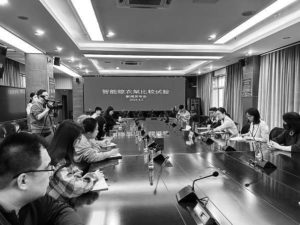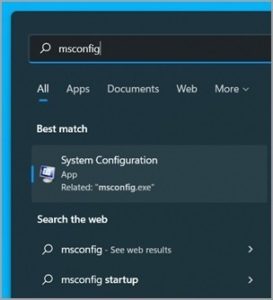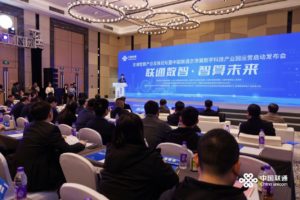Sensors Data: Dig deep into the digital transformation path of DTC enterprises, and realize the integration of online and offline in three steps
[ad_1]
Based on the practical experience of serving more than 2,000 enterprise customers, Sensors Data believes that the key to the digital transformation of DTC enterprises is to continuously iterate customer-centric enterprise operations through scientific methods. The ultimate goal of a business is to satisfy consumer needs. In the context of online and offline integration of big data, data (information) and scientific methods can help companies better understand customers and continuously iterate services to meet customer needs.
A single product or resource element with strong product power when a DTC company was first established, and obtained a certain part of the customer group through marketing. However, with the development and expansion of the enterprise, the product line has been extended and increased, and the efficiency of the early product-centered organizational form has gradually declined. Each business line serves its own customer base, product iteration and marketing are independent, corporate marketing is fragmented and overlapping, not only over-marketing to customers and disturbing customers, but also it is difficult for various product lines to exert synergistic effects, and corporate marketing effectiveness is gradually declining. The core of breaking the situation lies in the transformation from “product-centric” to “customer-centric”, enterprises need to deeply understand the needs and classification of customer groups, and optimize the organization of resource elements. Design the corresponding customer experience journey according to the classification of customer needs, give play to the synergistic effect of multiple product lines of platform enterprises, and improve the consistency and experience of customer marketing.
Compared with traditional enterprises, DTC enterprises show different characteristics in business, organization, IT and many other aspects. The core is to build a “customer-centric” capability system, including customer journey design, organizational transformation, customer data platform, customer marketing Engine, customer operation and other capabilities.
Next, we will describe in detail the three stages of customer-centric enterprise digital transformation.
Phase 1: Online Customer Journey
Enterprises need to first solve the problems of online customer journeys and accumulation of customer digital assets, and use this to guide customers to migrate to online channels, and establish stable online customer access channels based on customer scenarios.
What is the enterprise’s understanding of the online customer journey, that is, the construction of online channels? Many times, enterprises will think that the development of an app will complete the construction of online channels. For example, when we shop in an offline store, the clerk will guide us to download the App and log in and register, and then we will receive a large number of marketing campaign pushes. So, do customers really need so many pushes? It is very likely that they are unnecessary, and excessive marketing touches will disturb customers instead.
We believe that the online customer journey is not just about building apps or applets, but about making the entire journey of serving customers cloud-based, real-time, and data-based through technical means: ;Real-time is to enable online services to respond immediately to changes in customer needs; dataization refers to data collection in a compliant manner to meet the needs of enterprises for insight into customers and operations. Therefore, enterprises need to think about online construction as a whole, how and in what way the business end-to-end process will be online.
In the online and offline scenarios of the customer journey, typical applications usually cover the four major links of market launch, cognitive transformation, transformation and implementation, and continuous service.
In the process of market launch, enterprises need to truly understand the differences between different channels and the audiences of each channel in order to complete channel integration in the true sense. In the process of cognitive transformation, typical online methods include activity fission, word-of-mouth communication, etc. Whether or not KOC can be found is the key. In the process of transformation and implementation, what enterprises need to carefully consider is “how to improve transformation and retention”. In the continuous service link, recently, it is common to operate through strong touch points and strong content – WeChat Enterprise continues to operate WeChat ecology and private domain traffic.
For common online journeys such as Apps, applets, etc., we will not repeat them. The following will introduce the marketing methods of the recently widely used WeChat ecosystem, including five typical tools: Qiwei One-to-one, Qiwei Community, Moments, Official Accounts, and Video Accounts.
Qiwei one-to-one: suitable for products with medium and high customer unit prices and high professionalism. Usually, the decision-making link and cycle are long, and a good trust relationship with users is required. The service is more accurate and responsive, and the operating cost is higher.
Qiwei community: suitable for the release of explosive products and the promotion of daily promotional activities. Although it is not as customized as one-to-one, the advantage of the community is that it can create a community atmosphere and user relationships, which is conducive to forming a driving effect; at the same time, it can operate groups in batches customers, low operating costs.
Circle of friends: Suitable for new product launches, good brand promotion effect, less disturbance to users, stronger content drive, wide user coverage, and concentrated and rich information.
Official account: suitable for traffic acquisition and fan maintenance, and with strong content attributes, product and activity trends can be widely advertised. At the same time, the accumulation of content is also the continuous operation and accumulation of the brand, which has greater long-term value for the brand.
Video account: Including short videos and live broadcasts. Short videos are suitable for scene substitution, brand promotion and product planting, and many short video official platforms have more traffic and subsidies, and are still in the traffic bonus period; while live broadcasts can be intuitively felt, Interact directly and centralize deals.
The online customer journey is the introductory internal strength of the digital transformation of enterprises. In summary, there are four important steps as follows:
First, sort out the process and change. Sort out the clear business flow and customer journey of the enterprise, and define how each link should be online.
Second, information standardization. The information documenting the process is sufficiently standard to form a data asset.
Third, business operations are systematized. The online platform creates an end-to-end business process from the beginning of the business to the end of the business.
Fourth, agile production and research mechanism. Build a product R&D team integrating business, product manager and technology R&D.
Phase 2: Assetization of customer portraits
At this stage, enterprises rely on the accumulation of customer assets to strengthen insight into customer portraits, and use online new channels and operating methods to reduce the cost of reaching old customers, realize online access to previously unreached customer groups, and increase corporate coverage Increase customer base and strengthen market penetration.
Customer portrait is to collect the data required for personalized service and marketing through technology and customer journey, and finally build customer insight products with complete data and demand mining capabilities to improve marketing efficiency and effectiveness. So how can a company build a customer labeling system to truly serve the improvement of the company’s marketing efficiency and effectiveness? How can it achieve in-depth insight into customers?
We have summarized four levels of insight into customer needs: first, lifestyle, including gender, age, marital status, occupation, family income, place of residence, etc.; second, behavioral habits, including mobile phone usage behavior, app usage habits, financial management Information reading habits, investment and financial status, social behavior, etc.; third, attitudes and preferences, such as financial risk preferences, financial income preferences, financial product cognition, online loan industry cognition, online loan brand perception, etc.; fourth, values and Needs, including wealth outlook, consumption outlook, financial needs and goals, personality traits, etc. The insight into customer needs at the four levels is gradually deepened, and the difficulty is also gradually increased, especially around attitudes, preferences, and values. In many cases, we need to make inferences and predictions with the help of customer behavior.
From our service experience, in order to build a customer label with business insight, the core is to focus on two aspects: one is to pay attention to customer behavior, business data is of obvious value in customer value stratification, and behavior data is valuable in insight into customers in real time. Intentions and preferences have stronger marketing value, especially around customers’ unconverted business intentions or preferences. With the help of customer behavior data, companies can better predict the future direction of customers. The second is to describe and infer customer needs. To truly apply customer portraits to product experience and customer marketing, it is necessary to combine multiple data sources to directly describe customer needs and classifications. For example, what kind of data is used to infer price sensitivity, customer satisfaction, marketing bargaining, and so on. In addition, it is also necessary to construct the distribution changes of these needs and preferences in time and space (region). Only in this way can data be converted into valuable business information, which can be understood, used, and iterated by business personnel.
The above in-depth insights into customers need to be based on the collection and application of a large amount of customer data. The blueprint for assetization of customer portraits provided by Sensors Data for enterprises is as follows:
In the assetization of customer portraits, underlying data collection and data governance are also important parts that cannot be ignored, and are also one of the key challenges facing transformational enterprises. In the process of enterprise digital transformation, data governance is a typical top-level project and gradual project due to the large number of systems and data sources, difficulty in integration, and long cycle. Based on the needs of business scenario development, a bottom-up data quality system and System support capabilities, but data specifications and processes require top-down delivery and control.
Phase 3: Refinement of Customer Group Operations
Enterprises need to change their business operations from “product-centric” to “customer-centric”, and build refined management capabilities based on customer needs to meet more diverse customer needs. In the stock era of weak growth in the number of customers, realizing customer value mining and improvement is the key magic weapon for corporate revenue growth and profit improvement.
By deepening and thickening customer service to achieve refined operations, this is not simply to separate and classify customers, but to better extend and meet customer needs. Due to the psychological dependence of customer consumption, when a customer develops loyalty to a brand, he will be more willing to purchase other products and services of the brand. Based on user insights, companies can analyze the strength and weakness of customer needs corresponding to each product and analyze time changes, and design personalized product experiences based on the demand scenarios of highly competitive products for different customer groups. and services, reduce the cost of customer repurchase and cross-selling, and drive performance and profit growth.
Sensors Data’s customer management concentric circle method is a method of gaining insights into the core scenarios of customers and their relevance through data. We can describe customer needs as multi-layered concentric circles. The deeper the demand, the stronger the intensity and competitiveness (for example, the higher the frequency of occurrence and the higher the bargaining power), and the further the outer layer, the lower the demand correlation and competitiveness. This picture can also be expanded to different groups of people or time dimensions, showing a richer description of the relationship between different demand scenarios. It can be seen that the accumulation of customer data assets completed in the second stage is an important basis for the identification of customer needs and the design of customer journeys in the third stage. In the information age, the “customer-centric” business philosophy has thus become an accessible, verifiable and iterative implementation method within the enterprise.
Take the big health scene as an example. The concentric circles of customer business scenarios are popular science information, general health management, chronic disease management, and online medical consultation from outside to inside. As shown below:
Under different customer needs, how can enterprises empower their customer groups with refined operations through digital marketing? We can plan and design from two key dimensions: individual customer value and product service form.

The customer value dimension clearly distinguishes the customer incremental value mining methods. The higher the value of a single customer, the more attention is paid to the mining of top customers in customer marketing, the more consultative sales are preferred in sales methods, and the marketing engine often relies on capabilities such as customer 360-degree insight portraits, sales empowerment, and lead classification. The low customer value scenario pays more attention to the efficiency and effect iteration of batch marketing, relying on the real-time, intelligent, and automatic capabilities of the marketing engine.
Product service forms are divided into entity and service ends. The more you lean toward the physical end, the more the end-to-end business process will inevitably lean towards online and offline integration, and the informatization of offline customer channels will become more important. The integration and governance capabilities of data systems are one of the key core capabilities. In favor of server-side business, the construction of online channels and the establishment of an active operating system are more important than physical business. In addition to carrying product transformation and services, online channels must also have active retention capabilities, and enriched subscription services are among them. An important customer operation tool.
Customer refinement operation is a continuous iterative process. Only by constantly understanding changes in customers and needs can we provide reliable support for corporate decision-making. Based on this, Sensors Data summarizes the SDAF data closed-loop methodology, namely Sense perception, Decision decision-making, Action action, and Feedback feedback. Through the application of the four major links, enterprises can easily realize data closed-loop and continuously iterate customer operations.

[ad_2]
Source link

